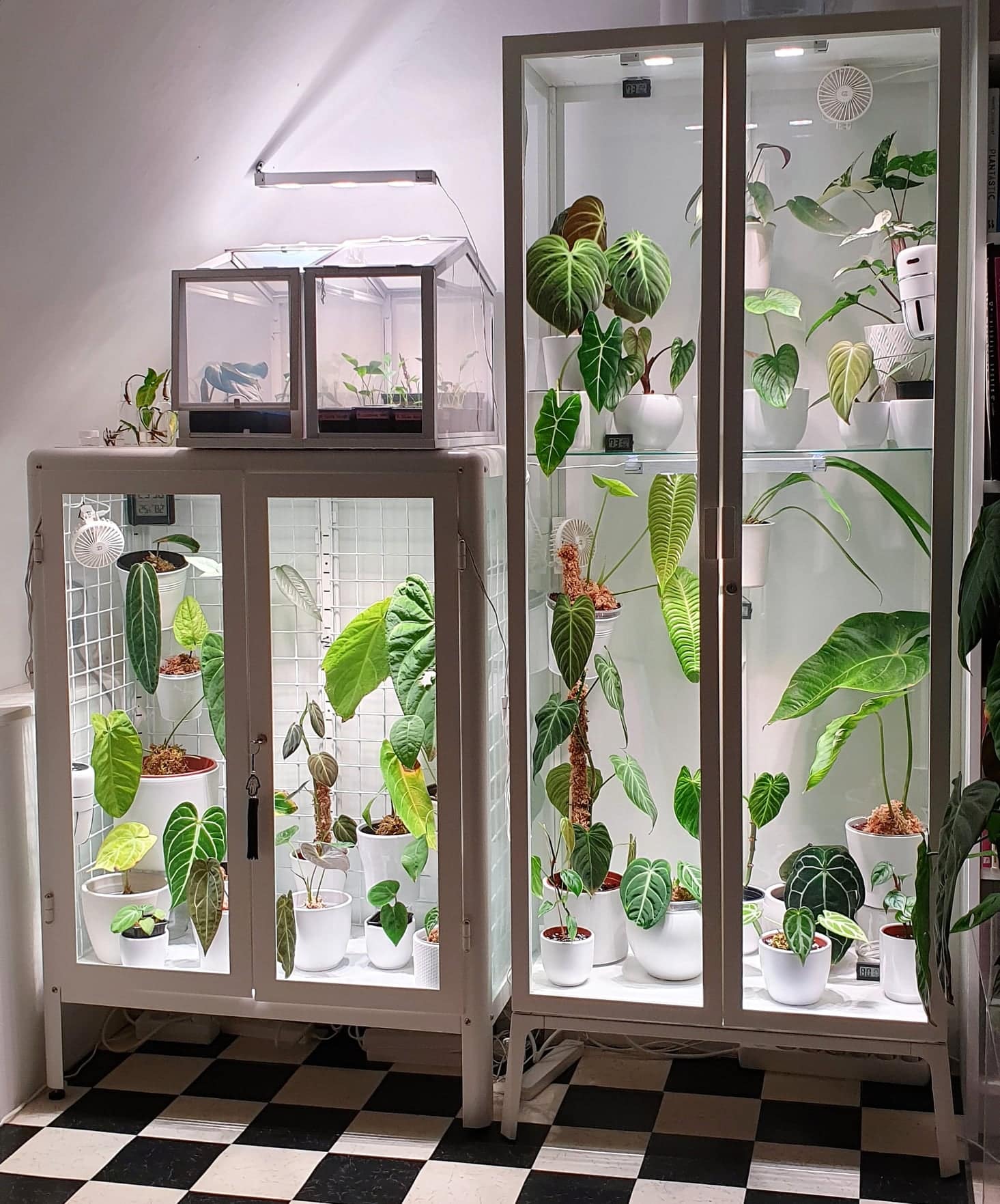“If I come home after a really hard shift, I just want to sit in front of my cabinets and stare at my plants and do nothing.”
That’s Robin Schouten, a 29-year-old healthcare worker and student from the Netherlands, a houseplant enthusiast, and the creator of the @ikeagreenhousecabinet account and hashtag on Instagram.
With the UK now over a month into its third national lockdown, more and more of us are joining Robin in her love for indoor greenery. In 2019, people in Britain bought on average two houseplants a year. In the three months that comprised the UK’s first lockdown, people also bought on average two houseplants—an increase of 300%.
But are any of us thinking seriously about what environment our new plant friends might thrive in? Or are we just putting them on a windowsill, watering them every so often and hoping for the best?
Many plants will survive this treatment, but if you the room to do so, constructing an indoor greenhouse is something that will keep your plants as healthy and happy as possible.
The DIY indoor greenhouses @ikeagreenhousecabinet showcases are usually made from Ikea display cabinets, fans, and a variety of optional extras. These depend on what the greenhouse’s leafy inhabitants like, what your budget is, and the level of your DIY skills. The account also contains tips and tricks for building the greenhouses.
“You can pretty much put any plant in there you want”, Robin said. “You just have to check the ins and outs of “what does this plant need”?” This means checking how your houseplants would live in the wild and then building your greenhouse to replicate that.
For example, Robin collects aroids, which need high humidity. Inside a homemade greenhouse, even without buying humidifiers, she can give them 80-85% humidity—due to the volume of plants inside and her weather-stripped (sealed) cabinets. A sensible humidity for the rest of the house is 30-60%, which the plants would not like as much.
The base for a greenhouse cabinet is any glass cabinet—Robin’s account features Ikea’s Detolf, Fabrikör, Milsbo and Rudsta cabinets, with the cheapest, Detolf, £60 in the UK. Then, you definitely need a fan—anything from a cheap mini desk fan to a specialist terrarium one.
“The most important thing for the cabinets is airflow”, Robin said. “Stagnant air and old air will ruin your plants and will create mould. The leaves will turn brown, the soil will stay wet for way too long.”
“You need fans and you need to open up the cabinets a few times a day. Or, if you’re lazy like me, just when you want to check the plants.”
Then, of course, there are lots of other things you can add, depending on what kind of environment you want to create for your plants. You can add grow lights, if your plants need lots of light or if your greenhouse is in a dark spot. You can add a heating cable or heat mat for plants that like warmth. You can add water features, or create a moss wall on the back of the cabinet.
Some cabinet owners have even set up smart devices so they can control their lights, humidifiers and fans from their phone.
But there’s a serious side to the plant-based fun. Mixing water and electricity can be deadly, and rust and mould can ruin an otherwise beautiful greenhouse.
The @ikeagreenhousecabinet page shares lots of tips on these subjects, such as using WD-40 to rust-proof the cabinet before loading it with plants and creating a “drip loop” when wiring to make sure water can never run into your mains socket. “Three people now over the years I’ve been doing this have had the glass explode,” Robin added. She explained the issue was a combination of the cabinets sitting on an uneven or soft surface and warping through the weight and frequent use of the doors, which put pressure on the glass, eventually shattering it.
“There’s a lot of information out there, especially on my page and on the Instagrams of people who have such cabinets… but if you’re starting and you know pretty much nothing, don’t just follow one person and recreate what they did”, Robin urged. “You have no idea if it’s a good one or not. I killed so many plants in the beginning just through trial and error.”
Still, despite these concerns, she clearly has no regrets about caring for her plants in this way, as I could tell as she described sitting in front of her cabinets at the end of the day. “My thoughts in my head just stop, I don’t think about anything, and it’s such a wonderful and weird experience to have. That’s what plants do for me; they just keep my head quiet.”
Words by Naomi Curston
Love Lifestyle? Read more here.
Support The Indiependent
We’re trying to raise £200 a month to help cover our operational costs. This includes our ‘Writer of the Month’ awards, where we recognise the amazing work produced by our contributor team. If you’ve enjoyed reading our site, we’d really appreciate it if you could donate to The Indiependent. Whether you can give £1 or £10, you’d be making a huge difference to our small team.
